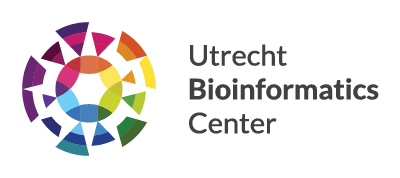Dr. Aridaman Pandit is a Computational Immunologist, and an expert in a unique interdisciplinary field combining knowledge of immunology, mathematical modeling and bioinformatics. This is how Aridaman Pandit became an expert in his field of interest:
“In short, this is my story. I finished my Bachelor’s in Biotechnology, showed the world how HIV continuously evolves, and then diversified my field of research by studying viral evolution from an immunological perspective. In addition, I learned more mathematics and built on a network at Utrecht University, where Prof Rob de Boer and I collaborated on the development of RTCR: a superior pipeline to study T cell receptors (TCR).”
VENI research at UMC Utrecht
“Together with Prof. Timothy Radstake, I work on immune dysregulation of autoimmune diseases. Prof. Radstake has acquired a large cohort (called SYSCLASS) containing different immune cells isolated from autoimmune patients. Autoimmunity is particularly interesting, as every patient manifests with rather unique clinical phenotypes, with no known cause or cure for the disease. I have been awarded an NWO-VENI grant, which gave me the opportunity to develop bioinformatics pipelines to study different immune cells using their transcriptomes and epigenomes in heterogeneous autoimmune patients. As I am still a Junior PI, I hope that in near future my research will provide important therapeutic and diagnostic aid towards clinical immunology.”
Broad applicability of bioinformatical tools
Aridaman is a very active member in the Utrecht Bioinformatics Center. “Within the UBC community, we learn about ongoing research in different fields and bioinformatical approaches. There have been several instances where techniques used in distant fields have proven to be directly applicable to our immunological questions.
To understand heterogeneity in immune cells, HIV and autoimmunity, we are using and developing bioinformatical tools to integrate multi-omics (transcriptomics, epigenome, proteome, secretome) data, and to study immune cell-cell interactions, single molecule T cell repertoires (RepSeq), and model immune dysregulation. The tools we develop can be easily applied to study various diseases, including cancer and infectious diseases, as well as for non-immunological research questions.”
Daily concerns
“I co-supervise five PhD candidates to study different aspects of the immune system, viral dynamics and autoimmunity. Let me tell you about the three main immunological and bioinformatic challenges we work on, often in close collaboration with UBC-partners.”
Immune cell subset profiling using multi-omic data: with the acquisition of ever-more big data, bioinformatic analysis is becoming a challenge. We are working on several approaches based on graph theory and machine learning to integrate multi-omic data generated from different immune cells to study how immune system is dysregulated in autoimmunity.
T cell repertoire dynamics: it is crucial to understand this for personalized medicine and therapeutics of cancer, autoimmunity and infectious diseases. Every T cell carries a T cell receptor (TCR) that is used to sense the presence of foreign antigens infecting our cells. From only 65 TCR genes, our body uses random mutations and new combinations to produce >10E8 TCR receptors. Thus, nearly every T cell that circulates in our blood could carry a unique TCR molecule that can theoretically recognize a unique antigen. Due to the enormous diversity, every individual can mount a very personalized immune response against the same pathogen.
HIV Haplotyping: a major problem in finding a cure for HIV is that the virus develops extreme diversity within a patient in order to evolve resistance and escape the immune response. With next-generation sequencing, we typically generate short reads, so we cannot capture the entire spectrum of co-evolving mutations that take place throughout HIV genome. We have been developing bioinformatic methods to extract HIV haplotypes (co-evolving HIV variants) from a single NGS sample.
Give and take within the UBC community
Being situated in a clinical group, the Utrecht Bioinformatics Center provides a great platform to interact with other bioinformaticians and mathematical modelers. “We actively attend and present our work in monthly UBC seminars, as this provides us very relevant feedback. Moreover, my group is actively meeting, interacting and collaborating with fellow bioinformaticians and PIs working on immunological questions in research groups in Utrecht University and UMC Utrecht.
I have been teaching the April edition of Introduction to Python course for students and PhD candidates within the Bioinformatics Master’s profile. This has also provided me with a very interesting opportunity to directly interact with upcoming biologists, learn from them and get them excited about bioinformatics.”
One umbrella for future bioinformaticians
When asked for his advice to future bioinformaticians, Aridaman replies: “You should have a good command of at least one programming language. But bioinformatics is by definition an interdisciplinary field, and requires constant interactions with cellular and molecular biologists, immunologists, plant biologists, virologists, physicists, clinicians and other specialties depending on the research question. So in my opinion, a key aspect of being a good bioinformatician is to be able to interact with your fellow biologists and be an expert in the fundamental aspects of biology related to your research question. Choosing a niche can help a lot in that, and students can explore different possibilities during their internships. In my experience, I have found attending specific journal clubs, interdisciplinary talks and conferences to be of great help.
A great place to learn new things has been the corner coffee room, conversations in the University offices, and the research wings of the hospital. These have frequently helped me to learn about new scientific developments and exciting new research.
Another important factor that the future bioinformaticians should look for is a good mentor. UBC as a community has been extremely successful in bringing together several great mentors under one umbrella, and the next generation should try to extract as much out of them as possible. UBC as a community has always been very open for guidance, discussions and mentorship.”

